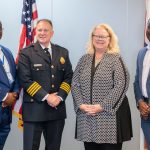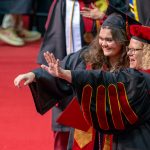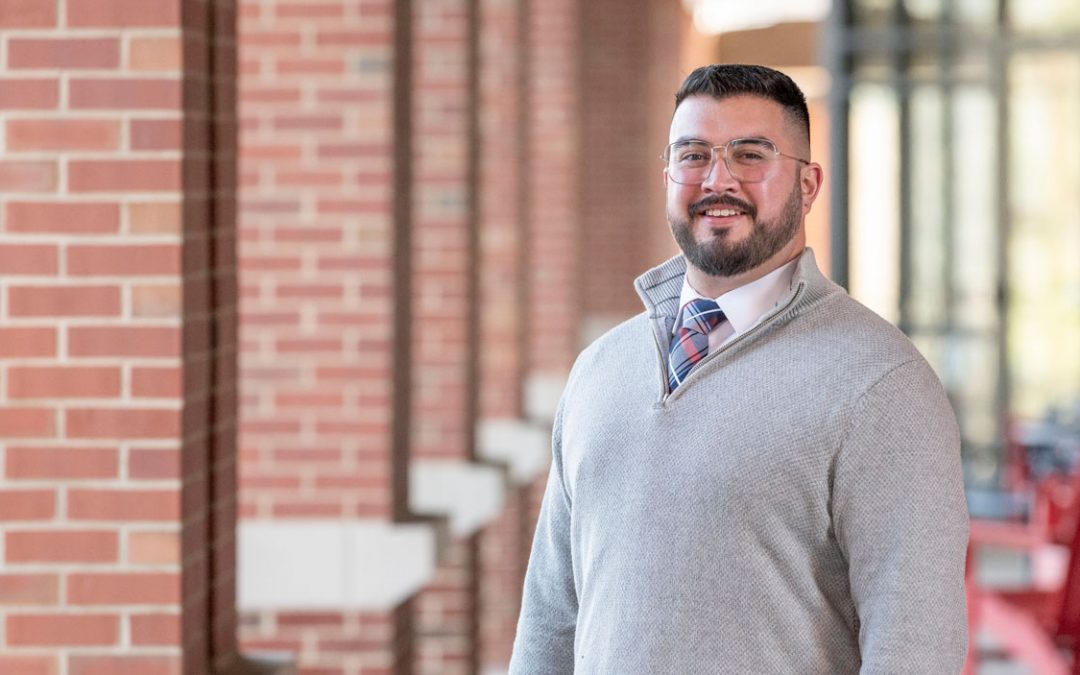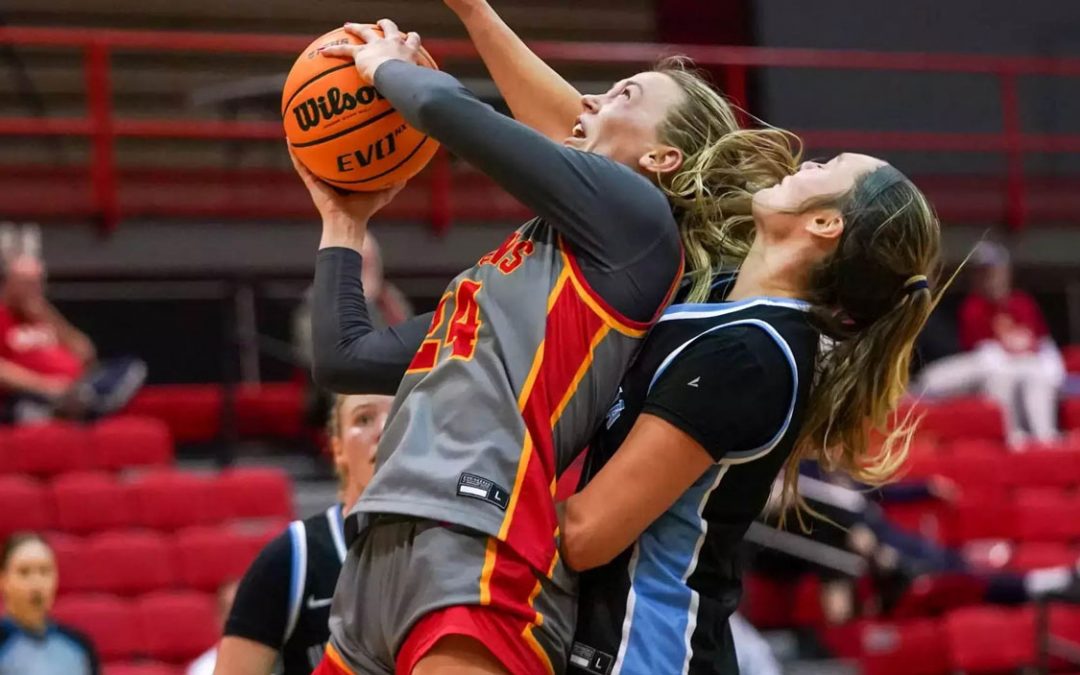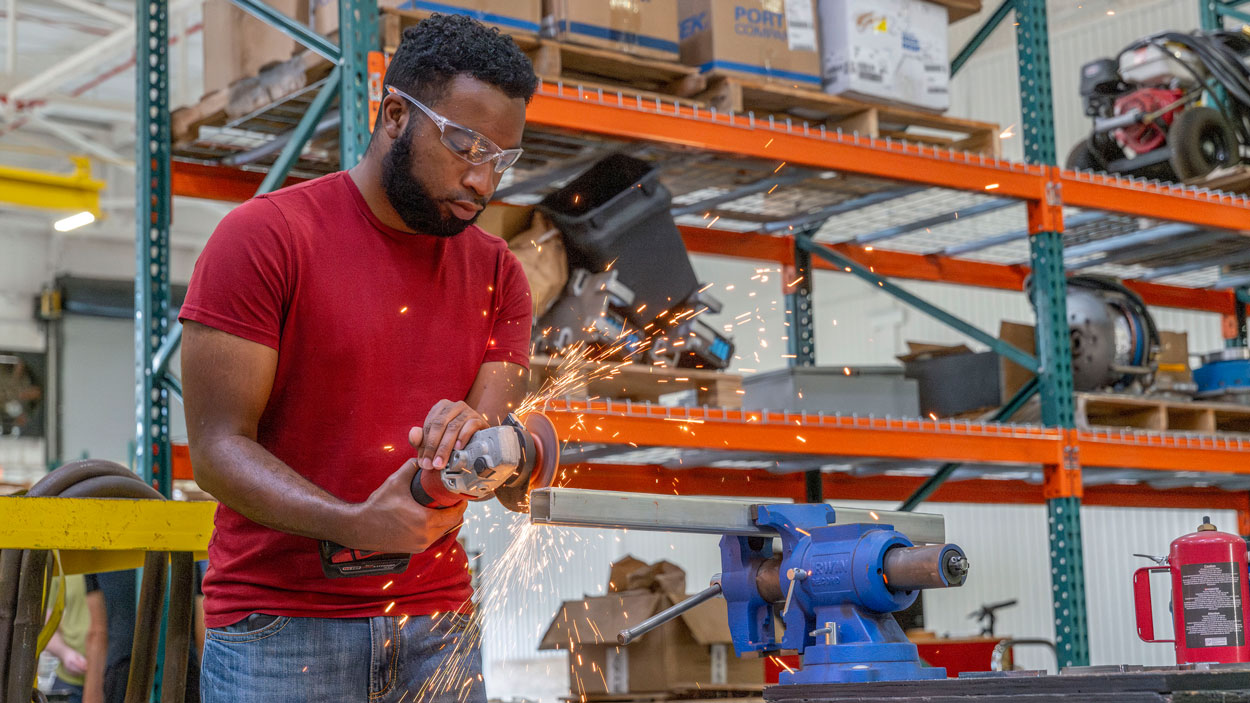
Intramotev intern Emmanuel Morgan has one year remaining in the UMSL/Washington University Joint Undergraduate Engineering Program. (Photos by Derik Holtmann)
For 30 years, the University of Missouri–St. Louis/Washington University Joint Undergraduate Engineering Program has been helping students secure internships and job opportunities in the engineering industry through the program’s expansive network of contacts.
One such partner is Intramotev, a startup co-founded in 2020 by Timothy Luchini, Alex Peiffer and Corey Vasel. Luchini, who moved to St. Louis in 2015 when he was hired at Boeing as a mechanical engineer, has been an adjunct instructor in the program since 2017, and there are currently 10 staff members – both full-time employees and interns – connected to the program.
Knowing the quality of the students he teaches, Luchini’s choice to hire from the program has been easy.
“That’s why you see bigger companies like Boeing engaged with the program, all the way down to a startup company like Intramotev,” Luchini said. “Spending time with students, seeing how they think and seeing how they take new information and apply it to something, that’s a really great opportunity to informally build a relationship with somebody. Then you try and marry them to the right opportunities, whether it’s with us or elsewhere.”
Intramotev’s primary focus is developing zero-emission battery-electric self-propelled rail cars out of its location in north St. Louis, fewer than five miles from UMSL’s campus.
“When you look at what we’re doing, a lot of people’s response is ‘Why doesn’t this already exist?’” Luchini said. “That’s how we know when we’re at the right time and place to make these technologies and implement them. It’s a massive opportunity to complement what rail has been doing well for the last 200 years and provide it with technologies that will help it compete for another 200 years. We’re excited to be the group to be doing that and to build on the legacy of what’s been done well in that space.”
For students and recent graduates, working for a startup has a unique appeal, offering the chance to create something that previously didn’t exist. That’s one of the reasons Grace Stonner, who started at Intramotev as an intern in 2022 – when the company was in its original location in Granite City, Illinois – accepted a full-time position as a mechanical engineer upon graduation in December 2023.

Grace Stonner (left) and Matthew Pulizzi both started at Intramotev when the startup was at its original facility in Granite City, Illinois.
“I do a lot of computer-assisted design, and I’ll actually fabricate the stuff that I design in CAD,” she said. “I helped design some prototypes for a remote dump system for the hopper cars. They have these giant gates on the bottom that open up to allow grain or whatever’s in the hopper to fall through. I made a remote communication system so you can basically do it from your phone. I absolutely love having such a hands-on job. To take something from my mind and put it into a 3D program, create a 3D model and then be able to actually physically fabricate it myself and put it on the train is the coolest thing ever.”
Emmanuel Morgan, an intern at Intramotev who was part of UMSL’s Bridge Program while at Kirkwood High School, has one year left in the joint engineering program. One of his projects – in addition to recreating the layout of the Intramotev facility, accurate to within six inches, in CAD – has been designing and fabricating mounts to attach antennas to the rail cars.
“School does a good job showing you how to streamline your ideas and design, but Intramotev shows you how to take those ideas, implement them into a plan and actually make it happen, in a quick format,” Morgan said. “Tim always has a phrase: fail quickly. Failing quickly is okay, but failing at the end, that’s not the way to go.”
That “fail quickly” motto is part of life for a startup. In fact, there’s even a so-called “Wall of Shame” at Intramotev dedicated to the interns and employees who have failed on the first few tries at a project but used the lessons learned to figure out how to solve the challenge.
“That’s a mindset necessity,” Luchini said. “We can’t operate like a major equipment provider. The wall is almost a rite of passage to have something up there, showing you figured out how to fix it instead of it taking three years to force something that never was going to work anyway.”
He pauses.
“That’s the luxury of being a startup and doing something new: Nobody can really tell us how to build a battery-electric self-propelled rail car other than ourselves because we’re the first in the world to do something like that.”
One of the things Luchini likes about the joint engineering program at UMSL is that it attracts students from nontraditional backgrounds because those students bring a different perspective. Matt Pulizzi, for example, spent six years in the Navy, working as a technician on nuclear submarines. Pulizzi started in the program in 2019 and joined Intramotev in 2022.
Because of the close relationship between the program and the company, Pulizzi is able to use his time doing his internship to advance his degree requirements.
“Right now we’re doing a senior design project here with a couple of my co-workers,” Pulizzi said. “It’s neat being able to work on a design project for this place as part of school. We’re making a remote-controlled decoupler for railcars. The idea is that in the future you won’t have to have somebody walking along a train of 150 cars and decoupling each one. We are at the stage of putting together the final prototype.”
Those shared educational experiences have helped create a tight-knit work environment.
“I learned very quickly that it makes it so much easier to have people you can discuss with, do study groups, trade information and just kind of help each other out,” Stonner said. “All of the interns here, they’re taking all the classes I already took, so I can give them advice about which professors to take, the best way to study for the material and offer any advice I think would be useful, having gone through it already.”
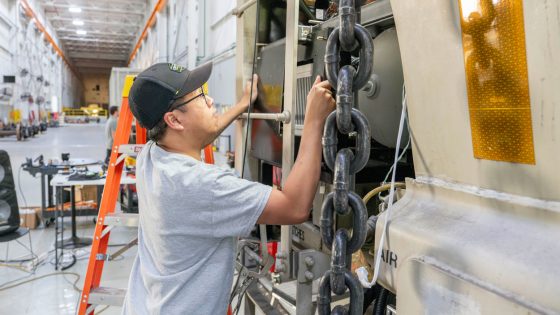
Intern Andy Sengsavang examines one of the rail cars in the Intramotev facility in north St. Louis.
Andy Sengsavang grew up in O’Fallon, Missouri, but traveled all over the world – he taught English in Guatemala, Thailand, Zambia and Spain – before settling with his wife in British Columbia, where he worked as a mechanic and welder. When he decided he wanted to pursue engineering, the joint engineering program at UMSL was a perfect chance to come back home.
And when he started his internship at Intramotev this July, that felt a little like home, too.
“I thought it was nice when I walked in and saw four or five people that I already knew,” Sengsavang said. “We’re all in the same classes, in the same department at school. I like the potential here. I like how you kind of get to do a little bit of everything.”
Cory McKiel shares the UMSL connection, though he wasn’t part of the joint program. After graduating from Pattonville High School, McKiel joined the Navy and served three years, then came back home to pursue his college education using the GI Bill. UMSL was a natural fit, and he graduated with a bachelor’s in mathematics with a minor in computer science. When he saw multiple openings with Intramotev’s software team, he applied for every single one.
He’s now part of the embedded software team.
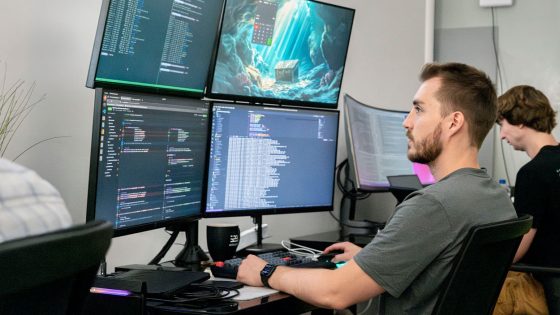
Cory McKiel spent three years in the Navy before attending UMSL with the help of the GI Bill.
“I like the autonomy and creativity I get to bring to my work,” McKiel said. “There have been days where I’ve constructed a piece of software and been able to bring it out that day to test it on a rail car. That experience is difficult to find at other places. It increases the sense of meaning.”
Luchini is quick to point out that Intramotev is still growing.
“We have 10 to 12 more job openings that are active right now in the engineering and technical side of things,” he said. “We have a chance to build on the success of what we’ve done so far. If we go back four years, this was just an idea but now it’s a business with a footprint and employees and everything else. We’re still on that journey of building something up and building something new. We want to bring those different mindsets together – somebody that doesn’t know a life without Chat GPT and somebody that’s never seen technology like that before – and marrying it together. You guarantee something cool will come out of it. That’s what we’re building.”



